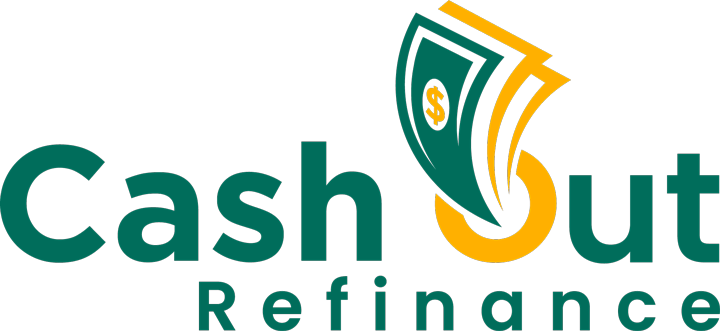A jumbo cash-out refinance is a powerful financial tool that allows homeowners with high-value properties to access their equity while refinancing their mortgage. This option is particularly beneficial for those whose loan amounts exceed conventional loan limits, set annually by Fannie Mae and Freddie Mac.
This guide will cover everything you need to know about jumbo cash-out refinancing, including:
- What a jumbo cash-out refinance is
- How it compares to a conventional cash-out refinance
- Pros and cons
- Qualification requirements
- Current loan limits
- Real-life examples of how homeowners use a jumbo cash-out refinance
- Steps to apply and maximize your benefits
What Is a Jumbo Cash-Out Refinance?
A jumbo cash-out refinance allows homeowners with high mortgage balances to refinance their existing jumbo loan into a new loan while withdrawing a portion of their home’s equity as cash.
Since jumbo loans exceed the conforming loan limits, lenders often have stricter qualification requirements, including higher credit scores, larger reserves, and lower loan-to-value (LTV) ratios than conventional loans.
Current Conforming Loan Limits for 2024
Each year, the Federal Housing Finance Agency (FHFA) sets loan limits for conforming mortgages. In 2024, these limits are:
- $766,550 for single-family homes in most areas
- Up to $1,149,825 in high-cost regions
Any loan exceeding these limits is considered jumbo, making a jumbo cash-out refinance necessary for homeowners with high-value properties.
Jumbo Cash-Out Refinance vs. Conventional Cash-Out Refinance
1. Loan Size
- Jumbo Cash-Out Refinance: Exceeds conforming loan limits ($766,550+).
- Conventional Cash-Out Refinance: Applies to loans within conforming limits.
2. Interest Rates
- Jumbo Loans typically have higher interest rates than conventional loans due to increased lender risk.
- Conventional Loans usually offer lower rates with more flexibility.
3. Loan-to-Value (LTV) Requirements
- Jumbo Loans typically allow up to 75%-80% LTV, meaning you must keep 20%-25% of your home’s equity.
- Conventional Loans may allow LTVs up to 85%-90%, enabling borrowers to cash out more equity.
4. Credit Score Requirements
- Jumbo Loans require 700+ FICO scores, with some lenders requiring 720+ for best rates.
- Conventional Loans may accept credit scores as low as 620, though higher scores secure better rates.
5. Reserve Requirements
- Jumbo Cash-Out Refinancing often requires 6-12 months of cash reserves.
- Conventional Loans generally require 2-6 months of reserves.
6. Documentation & Approval Process
- Jumbo Loans require extensive income verification, tax returns, and stricter underwriting guidelines.
- Conventional Loans have faster approval times and less stringent underwriting requirements.
Benefits of a Jumbo Cash-Out Refinance
✅ Access Large Sums of Cash
- Homeowners can cash out hundreds of thousands to millions of dollars for investments, debt consolidation, or other financial needs.
✅ Potentially Lower Interest Rate
- If mortgage rates have dropped since the original jumbo loan, refinancing could reduce monthly payments while pulling out equity.
✅ Debt Consolidation
- Use the proceeds to pay off high-interest credit cards, personal loans, or existing HELOCs, simplifying finances.
✅ Investment Opportunities
- Fund real estate investments, business ventures, or stock market investments with your home’s equity.
✅ Home Renovations
- Upgrade your home with luxury renovations, increasing its resale value.
✅ Improved Loan Terms
- Convert from an adjustable-rate mortgage (ARM) to a fixed-rate loan to secure stability in payments.
Potential Drawbacks of a Jumbo Cash-Out Refinance
❌ Higher Interest Rates
- Jumbo loans often have higher interest rates compared to conventional loans due to increased risk.
❌ Stricter Qualification Requirements
- Higher credit scores, lower LTVs, and larger cash reserves are necessary.
❌ Closing Costs Can Be High
- Expect 2%-5% of the loan amount in closing costs.
❌ Tied-Up Equity
- Pulling too much equity from your home can reduce financial flexibility in the future.
How to Qualify for a Jumbo Cash-Out Refinance
To secure a jumbo cash-out refinance, lenders require the following:
✔ Credit Score: 700+ (720+ for better rates)
✔ Loan-to-Value (LTV): Max 75%-80%
✔ Debt-to-Income Ratio (DTI): Max 43%
✔ Reserves: 6-12 months of mortgage payments in savings
✔ Income Documentation: W-2s, tax returns, profit/loss statements for self-employed borrowers
✔ Strong Payment History: No recent late mortgage payments
Real-Life Examples of Jumbo Cash-Out Refinancing
Example 1: Real Estate Investor Expands Portfolio
- Current Mortgage Balance: $1,200,000
- Home Value: $2,000,000
- New Loan Amount: $1,500,000 (75% LTV)
- Cash Received: $300,000
🔹 Use of Funds:
- Purchased a rental property generating $5,000 in monthly income
- Increased long-term wealth by diversifying assets
Example 2: Business Owner Funds Expansion
- Current Mortgage Balance: $900,000
- Home Value: $1,800,000
- New Loan Amount: $1,350,000 (75% LTV)
- Cash Received: $450,000
🔹 Use of Funds:
- Expanded an existing business, purchasing new equipment and hiring employees
- Avoided high-interest business loans
Example 3: Homeowner Completes Luxury Renovation
- Current Mortgage Balance: $850,000
- Home Value: $1,700,000
- New Loan Amount: $1,275,000 (75% LTV)
- Cash Received: $425,000
🔹 Use of Funds:
- Kitchen remodel, outdoor patio, and swimming pool installation
- Increased home value to $2,000,000+
Steps to Apply for a Jumbo Cash-Out Refinance
1️⃣ Assess Your Financial Goals
- Determine how much equity you need to cash out and how you plan to use it.
2️⃣ Check Your Credit Score & Finances
- Ensure your credit score meets the lender’s requirements and you have sufficient reserves.
3️⃣ Estimate Your Home Value
- Get a home appraisal or check recent sales in your area.
4️⃣ Compare Lenders & Loan Options
- Review interest rates, closing costs, and lender requirements for jumbo loans.
5️⃣ Submit Application & Documentation
- Provide tax returns, W-2s, profit/loss statements, and bank statements for approval.
6️⃣ Get Home Appraisal
- The lender will order an appraisal to determine your property’s market value.
7️⃣ Loan Underwriting & Approval
- The lender reviews all documents and issues final approval before closing.
8️⃣ Close & Access Funds
- Sign final paperwork and receive your cash-out funds within a few days.
Is a Jumbo Cash-Out Refinance Right for You?
✔ You need large sums of cash for investments, business, or home renovations
✔ Your home’s value has increased significantly
✔ You have excellent credit (700+) and financial reserves
✔ You want to replace an ARM with a fixed-rate mortgage
✔ You plan to stay in your home long-term
Final Thoughts
A jumbo cash-out refinance can be an excellent way for high-net-worth homeowners to unlock equity, reduce high-interest debt, and fund major financial goals. However, it requires strong financial qualifications, careful planning, and a clear investment strategy.
If you’re considering a jumbo cash-out refinance, compare lenders, understand loan terms, and ensure it aligns with your long-term financial objectives.
💡 Ready to explore your options? Get started today and unlock your home’s equity!


